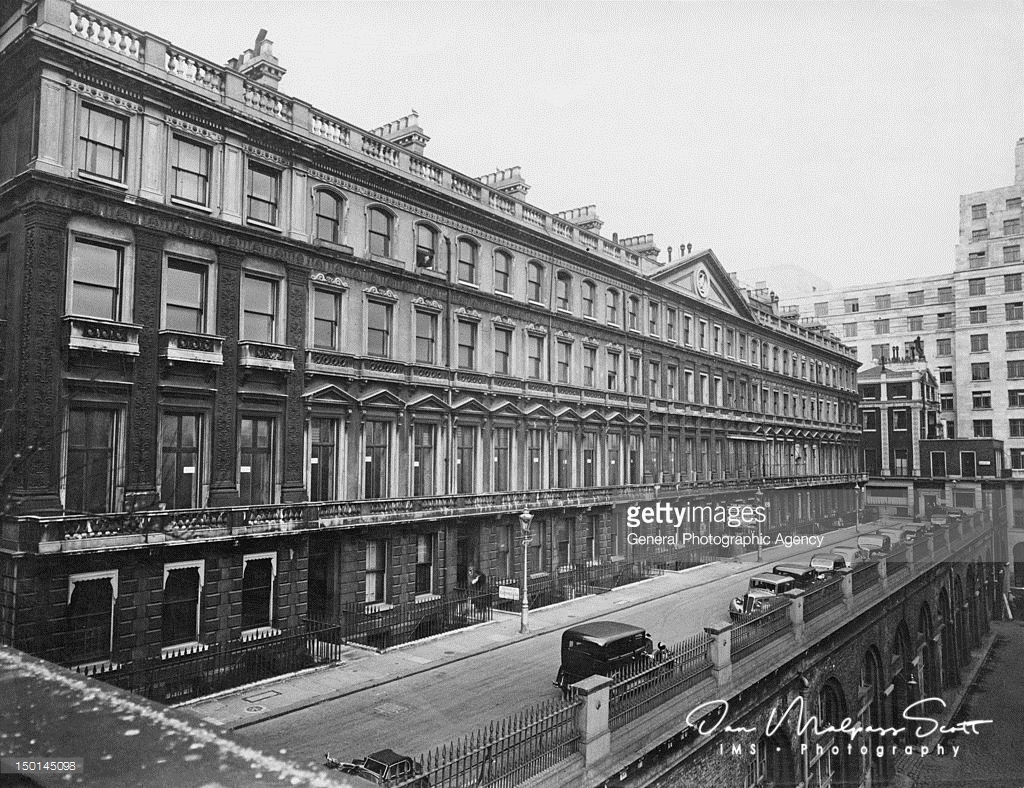
The Adelphi Buildings, a block of 24 unified neoclassical terrace houses occupying the land between The Strand and the River Thames in the parish of St Martin in the Fields, which also included a headquarters building for the “Society for the encouragement of Arts, Manufactures and Commerce” (now generally known as the Royal Society of Arts). They were built between 1768–72, by the Adam brothers (John, Robert, James and William Adam), to whom the buildings’ Greek-derived name refers. The ruins of Durham House on the site were demolished for their construction. The nearby Adelphi Theatre is named after the Adelphi Buildings. Robert Adam was influenced by his extensive visit to Diocletian’s Palace in Dalmatia, and applied some of this influence to the design of the neoclassical Adelphi Buildings. Many of the Adelphi Buildings were demolished in the early 1930s and replaced with the New Adelphi, a monumental Art Deco building designed by the firm of Collcutt & Hamp; buildings remaining from the old Adelphi include 11 Adelphi Terrace (formerly occupied by numismatic specialists A.H. Baldwin & Sons Ltd) and the Royal Society of Arts (which has expanded to incorporate two of the former houses).
Notable residents
Edward Litt Laman Blanchard, writer, lived in Adelphi Terrace from 1876 to 1889
David Garrick lived for his final seven years, and died in 1779, in the centre house of the buildings.
Thomas Monro, Physician to George III and art patron, owned a house in Adelphi Terrace.
Richard D’Oyly Carte, Victorian impresario
Sir J M Barrie (1860–1937), playwright and novelist, author of Peter Pan, at Adelphi Terrace
John Galsworthy, novelist, author of The Forsyte Saga
George Bernard Shaw, Irish playwright, Fabian socialist, co-founder of the London School of Economics and Political Science
Thomas Hardy, English novelist
Charles Booth, Shipyard owner, Philanthropist, coordinator and co-author of the monumental Life and Labour of the People in London (1880–1900).



